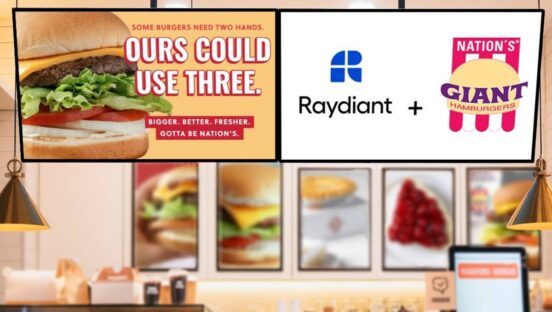It’s been a quarter century since ecommerce was born, but while the internet quickly revolutionized how we shop for everything else, online ordering and delivery of pre-made meals has only taken off in the last few years. Since 2014, digital ordering and delivery facilitated by companies like Grubhub, Uber Eats and DoorDash, has grown three times faster than dine-in traffic, and that growth shows no signs of slowing down: according to data, restaurant delivery sales are projected to grow at more than three times the rate of on-premises revenue through 2023. The majority of that increase will be in digital orders, which are expected to grow at a compound annual rate of more than 22 percent through 2023.
Those kinds of numbers have spurred a massive amount of investment into delivery service businesses, as well as a proliferation of new start-ups. It’s easy to understand why. Delivery services are a true disruptor and virtually every investor wants to get in early on “the next Amazon.” This same Gold Rush mentality has played out in regards to investment for everything from ride-sharing to coworking and virtually everything in between. But, as the recent challenges faced by some major players in those categories demonstrate, eventually markets become about the bottom line.
None of this is to say that food delivery services are going away or that they aren’t going to continue to rise in popularity with consumers. But, as is the case with most new, disruptive business models, there are a few kinks that still need to be worked out. Food delivery apps have allowed almost every quick-service restaurant to penetrate the delivery channel, a space traditionally dominated by pizza chains. One might assume that the growth of delivery apps would be unequivocally good for the restaurant industry. The reality is much more complicated, and restaurants working with delivery companies face three primary challenges:
Delivery company fees:
Just as delivery services have benefited from a honeymoon period in terms of seed investors, the same holds true with restaurateurs that see the promise of delivery apps in reaching new consumers. There is only one challenge here and that is pricing.
Some third-party delivery companies charge restaurants up to 30 percent for every customer order. While not every service charges the same, the reality is that onerous delivery company fees are going to increasingly become a prohibitive issue for restaurants.
While overall expense ratios don’t line up on an apples-to-apples basis for any given one (or, for that matter, hundreds) of delivery transactions, remember that the typical restaurant financial model operates on tight margins. Expenses factor differently for fast food, casual dining and upscale eateries, but the typical restaurant budget allocates 30 percent of gross sales to the cost of ingredients, 30 percent to the cost of labor and the remainder going towards rent, insurance, supplies and utilities and profit. If restaurants can’t directly profit from the greater sales volumes that delivery services may deliver, what’s the point to the end user?
Retrofitting space to accommodate delivery services:
With customers increasingly opting for delivery over dine-in, landlords and restaurants must rethink and/or redesign their space. It’s critical that delivery services don’t otherwise impede in-store or drive-thru trade (which will remain more profitable simply due to the issue of delivery company fees). Dedicated parking and pick-up areas (or even dedicated entryways) for delivery services is just the tip of the iceberg. Site selection, leasing and marketing strategies all are potentially impacted.
The dilution of competitive differentiators and brand awareness:
The promise of delivery app services isn’t just that they can boost revenues, but that they can potentially introduce restaurants or chains to consumers unfamiliar with the brand. The challenge here is that it is a double-edged sword. By inserting themselves between restaurants and their customers, delivery companies are making it harder for restaurants to build a direct relationship with customers and guarantee the consistent quality of their food.
In a recent insight report, Morgan Stanley analysts noted that, “losing ownership of their customers is a restaurant brand’s worst fear, ceding pricing power and customer data. And yet in this scenario restaurants become dependent on the incremental volume provided by online delivery, making walking away difficult.”
And for right or wrong, the state of the food when it reaches the consumer reflects on the restaurant as much as it does the delivery provider. Consistency is king in the restaurant industry. If food arrives cold because the driver got delayed, or if the driver delivers the wrong order, the restaurant’s image can take a hit.
What quick-serves need to do to survive and thrive
Delivery apps are here to stay, but there are ways that restaurants can counteract delivery fees and maintain control over their customer relationships and food quality. According to the Wall Street Journal, some of the biggest restaurant operators in the U.S. are leveraging their clout to negotiate lower fees. Some are also holding out the option of creating their own delivery capabilities to avoid the fees altogether. In an attempt to offset delivery fees, restaurants are monetizing convenience by charging service fees in addition to the delivery charges, or making delivery customers order from higher-priced menus.
We believe there will be additional consolidation in the marketplace, which should eventually reduce costs to restaurants and alleviate many of these concerns. At the same time, new delivery startups are approaching the fee structure conundrum creatively, which could also work out in quick-service restaurant’s favor. Those restaurants that do partner with delivery apps must focus on consistent service and quality, efficient restaurant layouts, adequate infrastructure and seamless technology to thrive in this changing landscape.
However quick-serves choose to address the food delivery revolution, one thing is certain: it’s here to stay. Convenience and choice will never go out of style. And the food delivery apps have become behemoths in their own right. Four companies—Grubhub, DoorDash, Postmates and Uber Eats control 95 percent of the U.S. food delivery market, and their combined valuation is now more than Yum! Brands, the parent company of that original ecommerce food pioneer Pizza Hut. As these companies continue to grow in resources and market penetration, they will be more difficult for the restaurant industry to influence. Quick-serves must remain innovative and adaptable to prosper in this new business environment.
Garrick Brown is the vice president of Retail Intelligence, Americas Retail Services at Cushman & Wakefield. In this role, Garrick advises restaurant executives on real estate strategy, and manages the firm’s staff of retail researchers to produce retail analyses and forecasts in the United States, Canada and Latin America. He can be reached at garrick.brown@cushwake.com.












